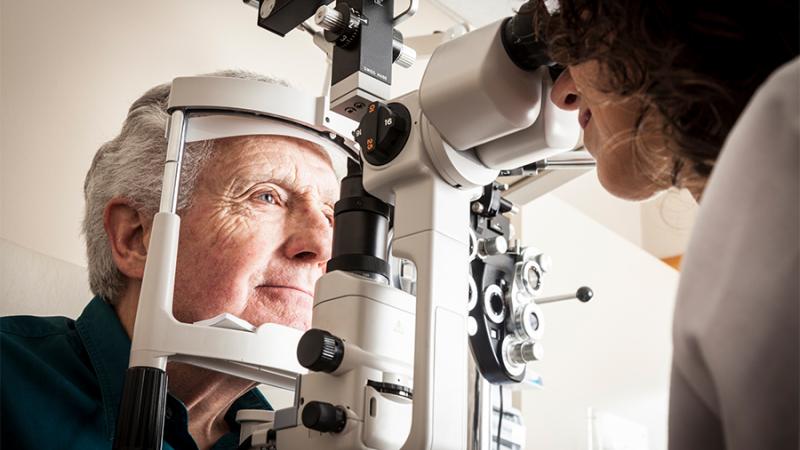Christopher Cioffi, Ph.D. investigates compounds that combat macular degeneration and Stargardt disease
October 28, 2024

Rensselaer Polytechnic Institute’s Christopher Cioffi, Ph.D., Thomas and Constance D'Ambra Professor in Organic Chemistry, has been collaborating with Konstantin Petrukhin, Ph.D., Professor of Ophthalmic Science at Columbia University, to develop compounds to treat dry age-related macular degeneration (AMD) and Stargardt disease — both blindness-causing diseases.
The team’s work has led to the discovery of an advanced preclinical candidate. Now, Cioffi and Petrukhin have received a $6.4 million grant over five years from the National Institutes of Health’s National Eye Institute to conduct drug development work and investigational new drug (IND)-enabling toxicology studies.
“This award helps us get one step closer to bringing our advanced compound into the clinic,” said Cioffi. “We will assess its ability to slow down disease progression and help preserve vision for Stargardt disease and dry AMD patients.”
AMD is the leading cause of blindness for those 60 and older in the United States, and dry AMD is the most prevalent form of the disease. It is characterized by lipofuscin accumulation in the retina. Stargardt disease is a rare genetic eye disease in which vision loss typically begins in childhood. In Stargardt macular degeneration, lipofuscin builds up in the macula, which is a small, round area in the retina. Lipofuscin consists of yellow-brown pigment granules. Pyridinium bisretinoids are components of lipofuscin that kill cells, or are cytotoxic. Cioffi and Petrukhin aim to inhibit the synthesis of bisretinoids in order to treat dry AMD.
The synthesis of bisretinoids is driven by the traffic of retinol from the bloodstream to the retina. The retinol binding protein 4 (RBP4) - Transthyretin (TTR) complex acts as the primary carrier for delivering retinol to the eye. RBP4 antagonists displace retinol from RBP4, causing the RBP4-TTR complex to dissociate, which suppresses lipofuscin bisretinoid synthesis. However, disrupting the RBP4-TTR interaction could potentially destabilize wild-type TTR tetramers and promote TTR aggregation in individuals with age-related predisposition to TTR amyloidosis disease (ATTR).
Therefore, the team has identified novel and orally bioavailable bispecific drugs that act as both RBP4 antagonists and TTR tetramer kinetic stabilizers. By binding to these sites, the drugs prevent the aggregation of TTR into amyloids.
“We are leveraging our drug development expertise to advance the development of a novel class of bispecific visual cycle modulators,” said Petrukhin. “We hope that our development candidate, which combines optimal safety and efficacy, will emerge as a new and improved therapy for macular degeneration, benefiting diverse patient populations in need of enhanced treatment options.”
“These bispecific compounds have shown therapeutic potential to treat atrophic age-related dry AMD and Stargardt disease,” said Cioffi. “In addition, the compounds may also have the potential to prevent ATTR.”
ATTR is a progressive disease that occurs when the body's TTR protein misfolds and forms abnormal deposits called amyloid fibrils. The buildup of these deposits often affects the heart and nerves.
Cioffi’s motivation comes from his desire to provide better treatment options for patients.
“There are very few therapeutic options available for patients suffering with dry AMD,” said Cioffi. “The available therapies are marginally effective, have been reported to cause severe side effects, and involve direct injection of the drug into the eye. We are developing an orally bioavailable drug taken as a pill that would be more effective at treating the disease, safer, and would avoid compliance issues associated with intravitreal injections. This work also paves the way for our drug to be studied for its effects in patients with Stargardt disease, which is a rare inherited retinal disease that afflicts children and adolescents. Working on a drug that may potentially also help preserve the vision of these young patients is another major motivating factor for this work.”
“These are devastating diseases with limited treatment options,” said Curt Breneman, Ph.D., dean of Rensselaer’s School of Science. “The work of Drs. Cioffi and Petrukhin has the potential to make a real difference in people’s lives!”